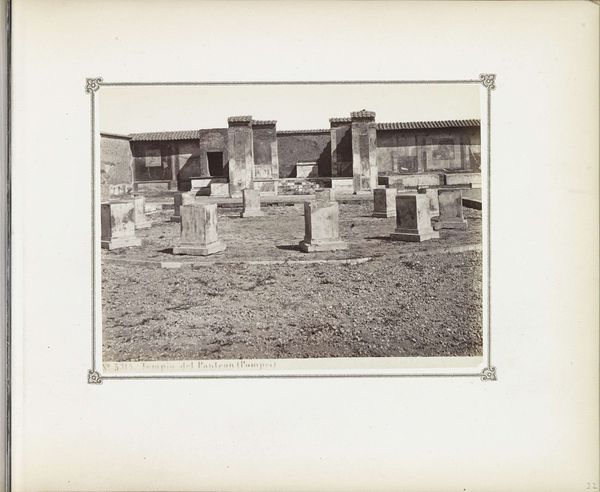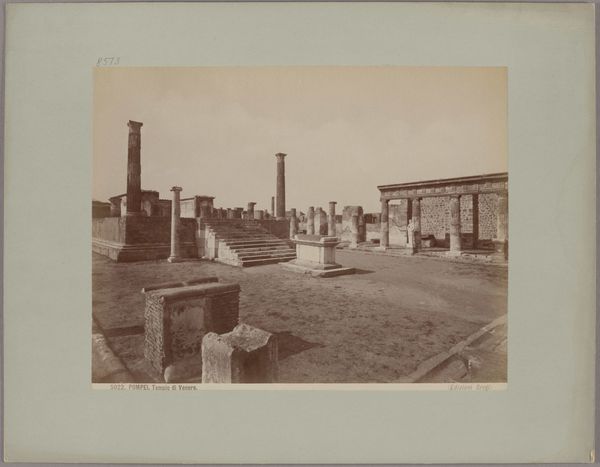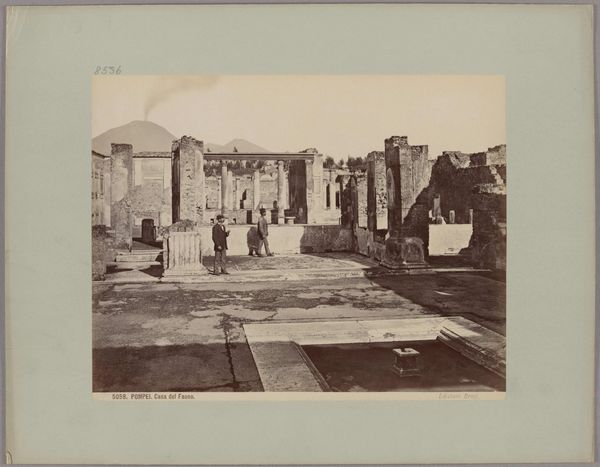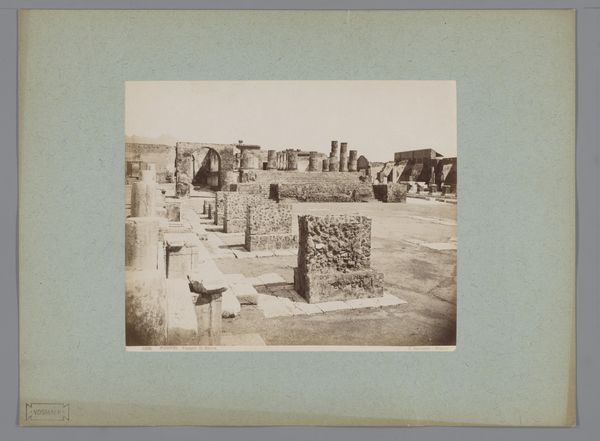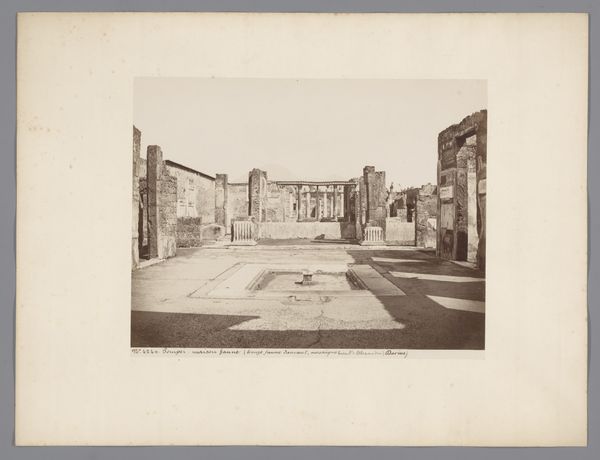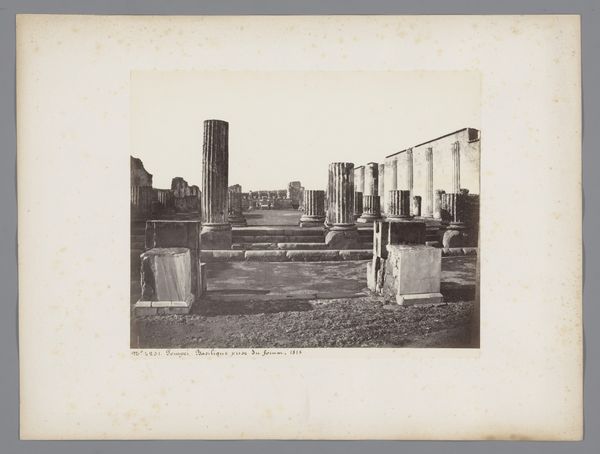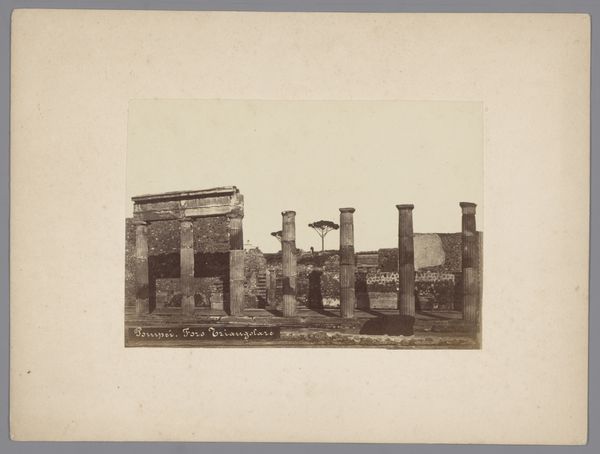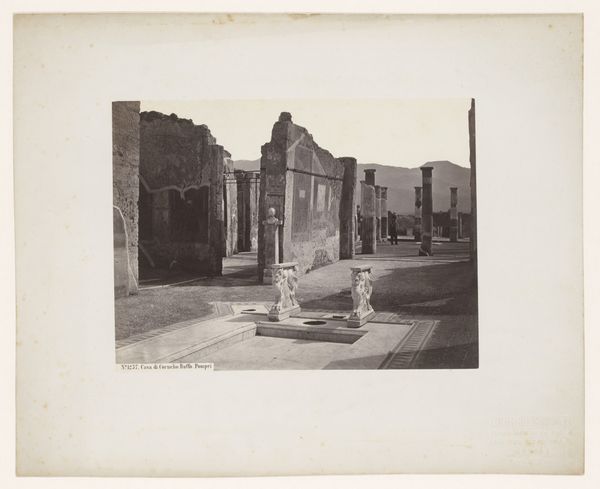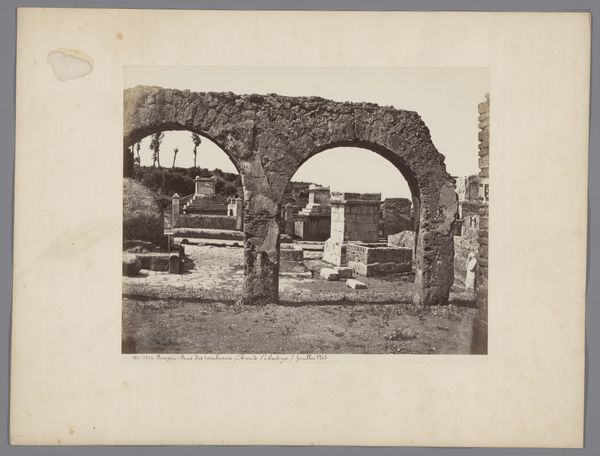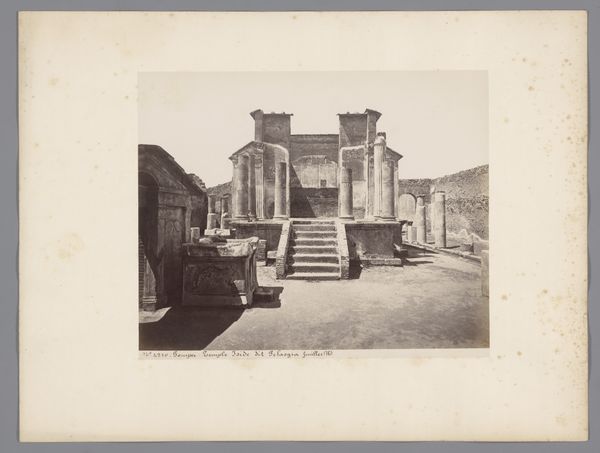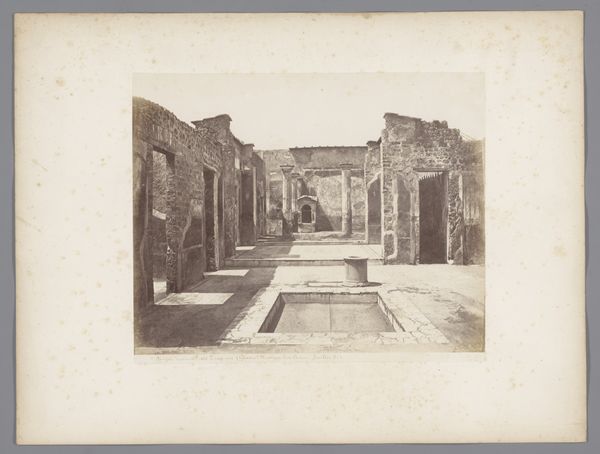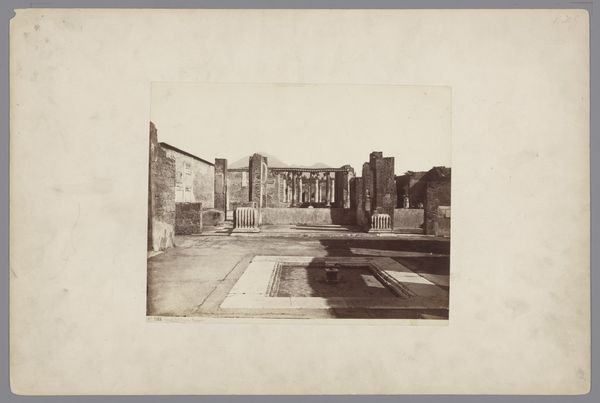
Pompeii_ Temple of Augustus, also known as Pantheon, No. 5027 c. 1870 - 1880
0:00
0:00
albumen-print, paper, photography, albumen-print, architecture
#
albumen-print
#
16_19th-century
#
landscape
#
paper
#
photography
#
ancient-mediterranean
#
cityscape
#
albumen-print
#
architecture
#
realism
Copyright: Public Domain
Giacomo Brogi's photograph, "Pompeii, Temple of Augustus," captures the temple remains with a subdued tonal range. The composition is dominated by the circular arrangement of column bases, anchoring the viewer's gaze. Brogi employs the camera to dissect the past, revealing the geometry and spatial logic of Roman architecture. The photograph’s stark presentation highlights the temple's layout. This resonates with structuralist ideas, emphasizing the underlying systems that organize human culture and visual perception. The arrangement of the temple remnants invites a semiotic interpretation, where each fragment acts as a signifier. They point to a lost history. Yet they also evoke contemplation on time, decay and memory. The photograph, therefore, functions as a cultural artifact. It destabilizes the present through traces of the past. The image prompts us to consider how we reconstruct narratives from fragments.
Comments
No comments
Be the first to comment and join the conversation on the ultimate creative platform.

